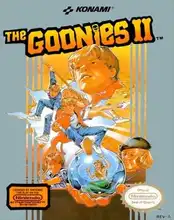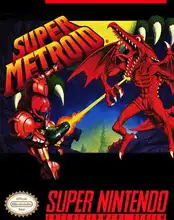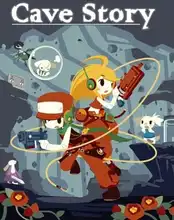Remember that feeling of getting stuck in a classic game, knowing there was somewhere else to go, but you just didn't have the right tool yet? Maybe a wall you couldn't break, a gap you couldn't jump, or a door you couldn't open? That core design loop is the beating heart of the Metroidvania genre, a style that has captivated gamers for decades, blending action, platforming, and deep, interconnected world exploration.
It's a genre name that literally mashes together two legendary series: Nintendo's atmospheric sci-fi adventure Metroid and Konami's gothic horror saga Castlevania. But what makes a game a true Metroidvania, and why does this formula feel so darn good, especially for those of us who grew up with pixelated secrets and sprawling 2D maps?
Let's take a trip down memory lane and figure out the enduring magic of the Metroidvania.
What Exactly IS a Metroidvania?
At its core, a Metroidvania game is about exploration and progression through gated access. Think of a massive, sprawling map – often depicted in glorious 2D side-scrolling – that's one giant, interconnected world rather than a series of separate levels.
Key characteristics include:
- Non-linear World Design: You're not just moving from level 1 to level 2. You're navigating a complex map with multiple paths, dead ends, and hidden areas.
- Ability-Gated Progression: This is the defining trait. You'll encounter obstacles (a high ledge, a weak floor, a locked door) that you can't pass yet. To progress, you need to find a new ability or item – like a double jump, a bomb, a wall climb, or a specific key – usually hidden elsewhere in the world, often after defeating a boss.
- Backtracking: Yes, you'll revisit areas you've already been to! But this isn't tedious padding. Backtracking is essential because those new abilities you found earlier? They now unlock previously inaccessible paths, secrets, and upgrades in old locations. It turns the familiar into the exciting.
- Character Progression: Often, you'll gain permanent power-ups that enhance your movement, combat, or defensive capabilities. Some Metroidvanias even sprinkle in RPG elements like experience points or gear systems.
- Sense of Discovery: Unlocking a new path, finding a hidden room, or finally reaching that tantalizing item you saw hours ago is incredibly rewarding. The world itself feels like a puzzle box waiting to be fully opened.
Where Did This Magic Come From? The Retro Roots
While games had experimented with non-linear elements before, the modern Metroidvania formula solidified with two titans of the 8 and 16-bit eras, and one PlayStation masterpiece.
- Metroid (1986) & Super Metroid (1994): The original Metroid on the NES gave us Samus Aran exploring the alien planet Zebes, gaining upgrades like the Morph Ball and Screw Attack to open new paths. Super Metroid on the SNES perfected this. Its atmosphere, intricate map design, and smooth mechanics set a gold standard for exploration-based platformers. Finding a hidden missile tank or learning a new sequence break felt like uncovering ancient secrets.
- Castlevania: Symphony of the Night (1997): While earlier Castlevania games were mostly linear stage-based affairs (save for the slightly experimental Castlevania II: Simon's Quest), Castlevania: Symphony of the Night on the PlayStation flipped the script. Guided by Koji Igarashi's vision, it adopted the exploration structure of Super Metroid but layered on deep RPG systems – leveling up, finding tons of weapons and armor, collecting familiars, and a massive, secret inverted castle map. This fusion was so successful it redefined the Castlevania series for years and cemented the "vania" part of the name.
It was the perfect storm: Super Metroid's impeccable world design and Symphony of the Night's addictive RPG depth and sprawling map. The term Metroidvania eventually stuck, a fitting tribute to the two series that codified the genre.
Why We Love the Backtracking (Seriously!)
Okay, "love" might be strong for some, but the backtracking in a Metroidvania is fundamentally different from getting lost in an old RPG. It's intentional and rewarding.
When you get a new ability, like a wall jump or a grappling hook, the first thing you think is: "Where can I use this?" Suddenly, those unreachable ledges or impassable chasms you saw hours ago become opportunities. Re-traversing a familiar area with new powers makes you feel powerful and smart. You see the world differently, and previously hidden paths or upgrades are now within reach. It's a brilliant way to reuse level design while constantly providing the player with a sense of growth and discovery.
Beyond the Classics: The Modern Metroidvania Boom
For a while, the genre seemed dormant, but the indie game revolution brought it roaring back. Developers, often deeply inspired by the 16 and 32-bit classics, found the Metroidvania structure perfect for showcasing intricate pixel art, tight controls, and compelling world-building on smaller budgets.
Games like Cave Story, Ori and the Blind Forest, Hollow Knight, and Bloodstained: Ritual of the Night (led by Igarashi himself!) have proven that the formula is timeless. They've pushed boundaries with stunning visuals, deep lore, and refined mechanics, keeping the spirit of exploration and ability-gating alive for a new generation while delighting veterans. Even classic IPs are getting the treatment, with games like Yars Rising taking Atari's arcade history and spinning it into a modern Metroidvania adventure.
The Enduring Appeal
The Metroidvania genre taps into something fundamental: the joy of exploration, the satisfaction of overcoming obstacles with newfound power, and the rewarding feeling of truly learning and mastering a complex, interconnected world. It's a genre built on secrets and progression, perfectly suited for players who love to poke into every corner and see how far their abilities can take them.
Whether you're navigating the alien depths of Zebes, exploring Dracula's cursed castle, or delving into the forgotten kingdom of Hallownest, the core loop remains the same: explore, find power, overcome, explore more. And for many of us, that loop never gets old.
FAQ: Your Metroidvania Questions Answered
Q: What are the absolute must-play classic Metroidvanias? A: Super Metroid (SNES) and Castlevania: Symphony of the Night (PS1) are the foundational pillars and essential plays for understanding the genre's origins.
Q: Is every game with backtracking a Metroidvania? A: Not necessarily. True Metroidvanias use backtracking specifically in conjunction with ability-gating within a large, interconnected map to unlock new areas and secrets. Simple level-based games with collectibles don't fit the mold.
Q: Are there 3D Metroidvanias? A: Yes, while the classic form is 2D, the core principles of exploration and ability-gating in an interconnected world appear in 3D games like the Metroid Prime series, the Batman: Arkham games (using gadgets for access), and even elements in immersive sims like Prey.
Q: What does "Metroidbrainia" mean? A: It's a less common term sometimes used for games where progress relies more on the player gaining knowledge or solving environmental puzzles rather than acquiring specific character abilities or items, though they still feature open, interconnected worlds (like Outer Wilds or Fez).



